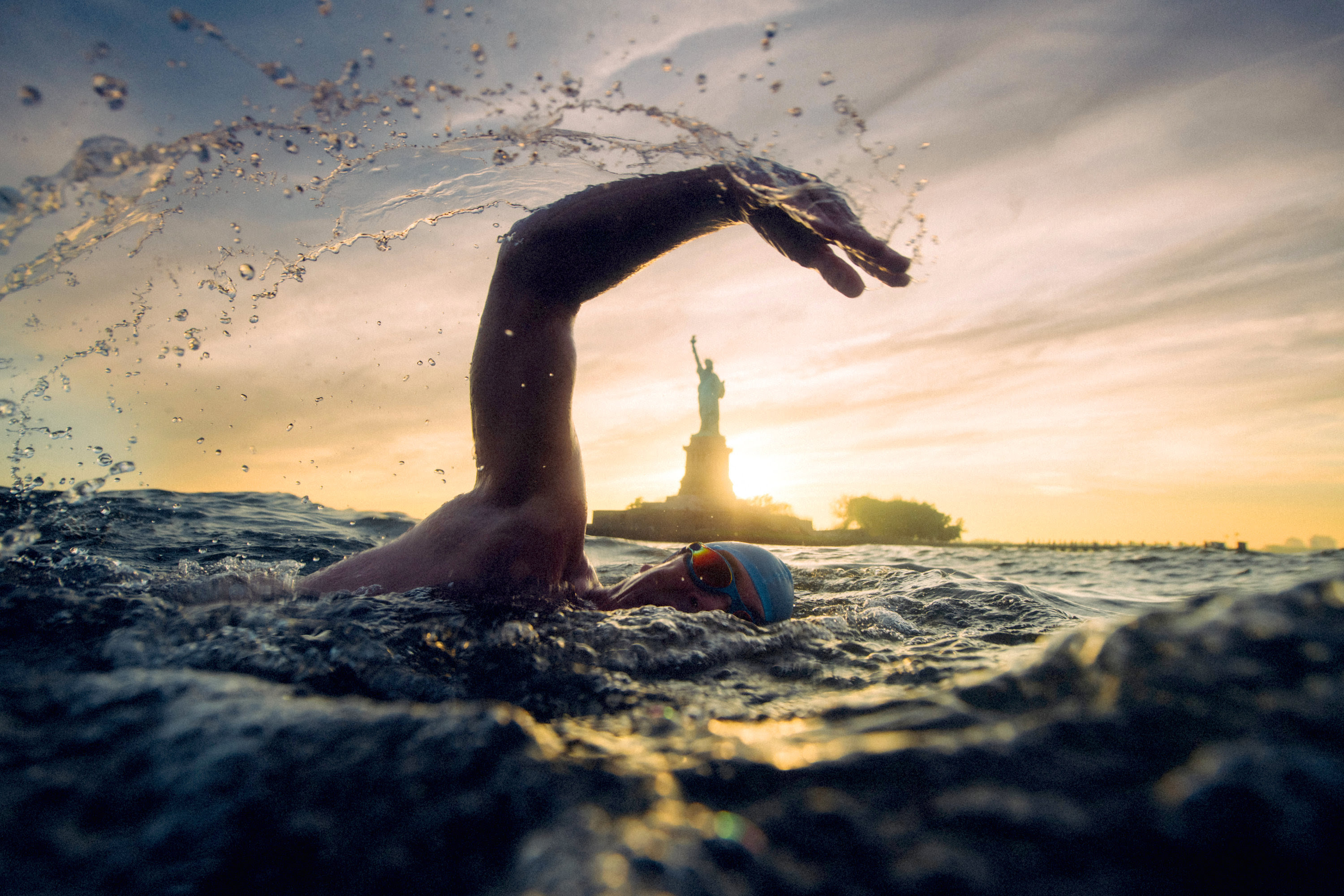Swimming champion Lewis Pugh changed the nature of the water, leaving the oceans to face the tumultuous waters of the Hudson River in New York State, declaring at the end of his 517-kilometer epic along the river that “we can never become complacent when it comes to protecting the environment”.
The 53-year-old British-South African champion began his 32-day challenge on August 13 at a small lake just south of the village of Lake Placid in the Adirondacks. For over a month, he swam the entire length of the river, sometimes covering more than 20 km in a single day.
“I’d been dreaming of this swim for many years, but the wait was worth it. Over the past month, I’ve gotten to know the Hudson River intimately, and I feel like I’ve made a friend for life,” said Pugh.
He also said he was pleasantly surprised by the extraordinary biodiversity he saw, which helped him overcome the physical pain of swimming.
Lewis Pugh is convinced that his fight is the right one, and he will continue to defend damaged marine ecosystems around the world.
“Bald eagles, vultures, beavers, black bears. Swimming to Albany, getting on my back to do a little backstroke to open up my chest and seeing an osprey slowly follow me down the river…. It’s something you’ll never forget,” he recalled.
“But we must never forget the story of the Hudson. Yes, more needs to be done and we must remain vigilant. But the Hudson gives me hope. I hope it gives hope to people around the world that one day, their rivers can be saved too.

Vidéo ONU/Grace Barrett
The Water Marathanonian chose the Hudson River to highlight successful efforts to clean up the river over the past few decades, and to encourage other countries to adopt similar measures for some of the world’s most polluted rivers.
“I’m very pleased that we were able to successfully complete this swim, and I think this river is emblematic of rivers around the world,” said Pugh. “Water is essential to life on Earth. If we are to have healthy oceans, we must also have healthy rivers. They are the arteries of our planet.
At the end of the 19th century, the Hudson River was one of the world’s most productive ecosystems. Populations of sturgeon, river herring and blue crabs used the river as a corridor between the Atlantic Ocean and upstream spawning grounds.
In the 1910s and 1920s, however, population growth and industrialization devastated this international waterway. Chemical waste dumping, overfishing and habitat fragmentation threatened the river’s biodiversity and the communities that depended on it.
Fortunately, however, the efforts of men of goodwill to clean up the Hudson and its many tributaries over the past 50 years have begun to bear fruit. In 1972, the United States passed the Clean Water Act, prohibiting companies from dumping chemical waste into the country’s waterways.
A ban on commercial fishing was introduced in 1976 and extended in 1985. In 2002, the authorities began dredging sediments from the riverbed laden with polychlorinated biphenyls (PCBs), which had contaminated a 320 km stretch of the river.
The champion swimmer is totally committed to this fight: “It’s a huge privilege to be able to represent the UN, and I feel passionate about countries working together to solve environmental problems. Nations will be able to come to the UN and ratify the High Seas Treaty,” Pugh told UN Info shortly after emerging from the water. “This is the last part of the world that finally needs protection.

The treaty provides, for the first time, an international legal framework for assessing the cumulative effects of climate change in areas beyond national maritime boundaries.
It will also strengthen international cooperation so that all member states can benefit from healthy marine ecosystems.
“This treaty is important because, until now, marine ecosystem conservation efforts have been limited to the territorial waters of individual countries,” Jamil Ahmad, UNEP’s Director of Intergovernmental Affairs in New York, told UN Info.
“Now, with the High Seas Treaty, the oceans as a whole will come under the jurisdiction of environmental governance, and we will have global cooperation, partnerships and collaborations between countries and regions to protect global ecosystems,” he added.
The High Seas Treaty will be open for signature at the United Nations headquarters in New York for two years from September 20, 2023, the day after the 2023 Sustainable Development Goals summit. It will enter into force once it has been ratified by 60 states.


